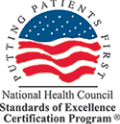June 11, 2021
“The Alpha-1 Foundation looks forward to continuing to work with Vertex in their drive to develop primary treatment for alpha-1-antitrypsin deficiency. While data from Vertex’s phase 2 with VX-864 did not meet clinical expectations, it is clear the oral small molecule corrector approach is on the right tract. As with all drug development programs there will be up and downs,” said Dr. Mark Brantly, Scientific Director of the Alpha-1 Foundation.
BOSTON–(BUSINESS WIRE)–Jun. 10, 2021
– Treatment with VX-864 led to a statistically significant increase from baseline in plasma functional AAT levels as compared to placebo and was generally well tolerated –
– Results provide proof-of-mechanism, although magnitude of treatment effect observed unlikely to translate into substantial clinical benefit; VX-864 will not advance into late-stage development –
– Vertex to advance additional novel small molecule(s) with potential for greater clinical efficacy into the clinic in 2022 –
– Vertex will host an investor conference call and webcast today, Thursday, June 10 at 4:30 p.m. EDT
BOSTON–(BUSINESS WIRE)–Jun. 10, 2021 Vertex Pharmaceuticals Incorporated (Nasdaq: VRTX) today announced that in a Phase 2 proof-of-concept study, VX-864 achieved rapid, consistent and statistically significant increases in mean functional alpha-1 antitrypsin (fAAT) levels of 2.2 to 2.3 micromolar from baseline in people with alpha-1 antitrypsin deficiency (AATD) with the PiZZ genotype, across three dose groups of VX-864 compared to placebo. VX-864 was generally well tolerated in the Phase 2 study. These data provide clear evidence that an oral small molecule corrector designed to promote the proper folding of the mutant Z-AAT protein can increase plasma levels of fAAT in patients with AATD. Although results provide proof-of-mechanism, the magnitude of treatment effect observed in this study is unlikely to translate into substantial clinical benefit. As such, Vertex will not advance VX-864 into late-stage development and instead will advance additional novel small molecule correctors with the potential for increased clinical efficacy into the clinic.
This press release features multimedia. View the full release here: https://www.businesswire.com/news/home/20210610005939/en/
“This is the first time that dosing of a small molecule corrector of the Z-AAT protein resulted in significant elevations in both functional and antigenic levels of AAT in people with AATD. We are encouraged by the clear separation of AAT levels in the VX-864 treated groups versus placebo and the favorable safety profile,” said Carmen Bozic, M.D., Executive Vice President, Global Medicines Development and Medical Affairs, and Chief Medical Officer at Vertex. “Based on these findings, we remain committed to developing transformative treatments for AATD and are working with urgency to translate the learnings from this study to optimize the next set of small molecule correctors so that we can fully realize the potential that this class of molecules may hold for people living with this disease.”
Efficacy Results
The study met its primary endpoint, with all VX-864 dose groups demonstrating highly statistically significant increases in plasma fAAT levels from baseline compared to placebo at day 28 of treatment. Treatment with VX-864 resulted in a mean increase of 2.2 to 2.3 micromolar in fAAT levels across the three dose groups studied compared to placebo. All dose groups showed a rapid increase in fAAT by day 7 which was sustained over 28 days of treatment. Similar statistically significant increases in antigenic AAT levels were observed compared to placebo, with a mean increase of 2.7 to 3.5 micromolar across the three dose groups studied. Plasma fAAT levels returned to baseline, in the 28-day safety follow-up period following VX-864 discontinuation, consistent with the half-life of native AAT protein and further confirming the biological activity of VX-864.











